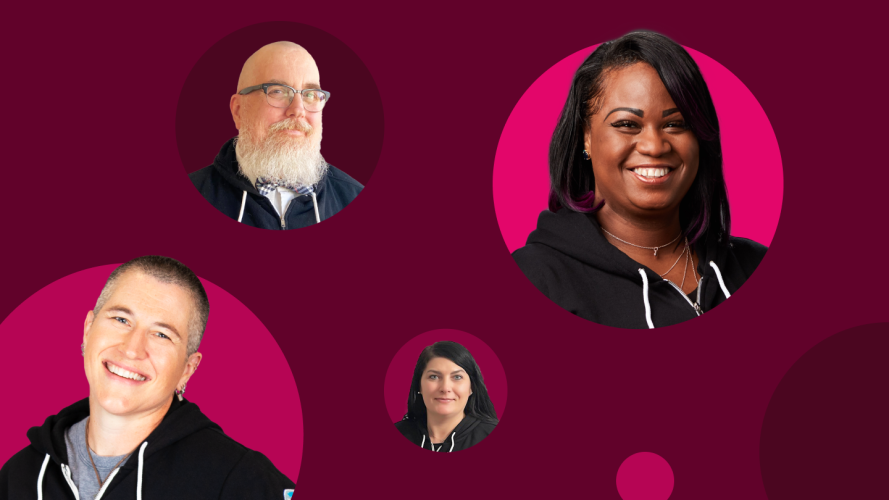Adopt a Moonshot Mindset to Transform Your Customer Service Delivery



To truly deliver exceptional customer service, you need to identify and achieve a big, audacious goal that gets your employees and your customers excited—your moonshot.

Ozan Varol
At the end of every year, service team leaders tee up a new set of KPIs they commit to improving in the next 12 months. While making incremental improvements to call center metrics and raising your Net Promoter Score (NPS) are good goals by themselves, they aren’t going to radically transform your customer experience. To truly deliver exceptional customer service, you need to identify and achieve a big, audacious goal that gets your employees and your customers excited—your moonshot.
A good way to go about defining your team’s moonshot is to set aside your NPS scores, your KPIs, and your PowerPoint decks and focus on the customer. What would it take for every customer we serve to be so delighted with the experience they have with our business that they can’t stop talking about it? That’s where you start to define your moonshot.
This could involve giving your customers things that they didn’t even expect. An example of this is how one pet supply brand sends their customers condolence cards when they’ve become aware that a pet has died. Who expects an online pet supply merchant to do that? No one! And that’s exactly why when that happens, people share the notes on social media, and how it made them feel seen and cared for by the brand.
Contrast this with how, in the early days of the pandemic, the phrase “unprecedented uncertainty” was repeated so many times, by so many brands, in these bland corporate messages that it became a cliche. When you keep seeing the same, generic responses from every brand, you think “this business is seeing through me as opposed to seeing me as a person,” which is not the path to customer loyalty and delivering exceptional service.
How to get your service team into a moonshot mindset
One of the primary tools leaders use to adopt a moonshot mindset is divergent thinking, which is a technique for creative idea generation through exploring many possible solutions to a problem. In contact centers, and throughout any successful business, it can be easy to get focused on doing things better and faster. You keep trying to improve upon what you did yesterday, as opposed to generating new ideas that can define not just the future of your business, but the future of your industry.
When you are in the midst of annual planning — which can be so focused on forecasting achievable goals and setting service level agreements for the coming year — it can feel challenging to take the time to actually put divergent thinking activities on the calendar. We’ve all spent afternoons in brainstorming sessions that felt like a waste of time. This is why it’s important to note that divergent thinking is not a synonym for brainstorming.
One study that analyzed previous research on brainstorming concluded that brainstorming is no better at generating creative ideas than people working individually by themselves. So why is that? It’s often because evaluation and generation are taking place at the same time. People are shooting down ideas right away. Every idea that someone mentions is met by someone else saying “oh, we can’t do that” or “we don’t have the budget for it” or “the CEO will never approve that.” So idea generation stops before it even begins.
Separate ideation from evaluation
When it comes to adopting a moonshot mindset, it is critical to separate idea generation from idea evaluation—separating divergent thinking from convergent thinking. It’s also important to present your collaborators with the problem you are looking to solve in advance, and ask them to submit some initial ideas anonymously prior to the divergent thinking session. Once you have a name attached to an idea, it becomes personal, and that can trigger internal politics, which is why it’s important for this initial phase to be anonymous.
Now you’ve got a treasure chest of ideas to share in your divergent thinking session, and then you start building on them. There should be no judgment of ideas. The goal of your collaboration and discussion is simply to generate more ideas, building on what people submitted anonymously. And as you do so, you will also create an environment of psychological safety, which is critical for moonshot thinking to work.
Shock the system
Can you imagine having been in the room when someone at Amazon came up with the idea of using drones to deliver packages? When the idea hit the media, people scoffed at it. It was so far out there. It would never work, right? Yet now, Amazon is testing autonomous deliveries via their 6-wheeled robot, Scout. FedEx is working on drones too.
But what do you do if your divergent thinking session is coming up with ideas that are more the equivalent of carrier pigeon deliveries than robot dogs? Or if people who have had their ideas trampled upon so many times previously aren’t willing to stick their neck out with a big idea? One solution is to shake people out of their rut by asking them what the science fiction novel solution to the problem would look like.
As Alex Osborn writes, “It is easier to tone down a wild idea than to think up a new one.” That’s why coming up with wild ideas is so useful. Not necessarily because you’re going to pursue them. Rather, they are often an amazing starting point for other ideas. They provide seeds for other ideas to germinate and emerge in a way that they wouldn’t if you had shut down that wild idea before it even surfaced.
Experiment, learn, and revise
Before you rule out an idea, or commit to it at full throttle, take some of the promising ideas the team generated and develop experiments. By thinking like a scientist and setting up a small-scale experiment, you can get real-world data to evaluate the idea’s viability without taking the risk of rolling it out across your entire customer base.
For simplicity, let’s say the idea is to use a new confirmation email. Instead of rolling it out to our entire customer base, we’re going to do it with a small subset of our customers. By doing this:
- If it doesn’t work at all, then you contain the damage.
- If it doesn’t work as well as you expected, you can get data from the customers’ feedback to iterate and improve.
For example, Starwood Hotels often used its W Hotels brand as an innovation lab, a testing ground for new ideas like signature scents and a living room experience in the hotel lobby. If the ideas worked in the smaller pilots in W Hotels, the company would roll them out to the other hotels in its portfolio. If the ideas didn’t work, the damage would be contained.
Back cast your way to a plan
A moonshot without a plan is just a fantasy. So we need to combine idealism with pragmatism here. In addition to conducting your experiments, a great way to figure out which ideas are doable, and which ones aren’t, is to create a concrete roadmap for putting that idea into action, working backwards from its launch, not forecasting from where you are now. Go back to the moonshot that pleased the customer so much they couldn’t stop talking about your product. Work backward from that ultimate goal and determine exactly what you need to do to get there.
This technique, known as back casting, will help you uncover ideas that are not doable, because as you look at the roadmap it will become apparent when you really don’t have the resources to roll out an idea. The other big benefit of back casting is to take this big, audacious goal, which looks really intimidating, and break it down into specific steps. It becomes easier to then actually take some steps towards your moonshot, to make some progress and build momentum.
Set the kill criteria before you start
This is something that Alphabet’s moonshot factory, formerly called Google X and now just called X, does well. They are well known for killing off products and experiments that don’t meet their goals. X develops a set of “kill metrics,” a set of go/no-go criteria for determining when to press ahead and when to quit with a project. The criteria are defined at the outset of a project—when your team is relatively clearheaded—before their emotional and financial investments might cloud their judgment.
Sometimes, you’ll come up with a wild idea, and the team is really motivated to try it. You start working toward it. Once you’ve committed time, money, and resources, even if it’s not working, it becomes hard to back down. It feels like a failure, rather than an experiment that didn’t work out. So, determining before you begin the criteria for killing that experiment or sticking to it is also important.
Bring the power of moonshot thinking to your customer experience
While it’s helpful for annual planning, moonshot thinking can — and should — be applied year-round to create room for innovation across the service team. Every day, your service agents are talking to customers. The key is to create an environment where they feel safe to relay feedback to leadership in real time, and trust that doing so will make a difference because the leadership team truly values their opinions.
When your frontline workers don’t feel they can speak up, not only does it limit your innovation potential, it can, in the worst cases, lead to disaster. Two tragic examples of this are the Challenger and Columbia accidents. Frontline engineers raised their hands in both shuttle disasters to raise concerns and make suggestions, only to have their managers brush them off.
This scenario, unfortunately, repeats itself across many different industries. As a service leader, if you are committed to delivering exceptional customer experience and transforming your team culture, you must find a way for frontline agents to raise red flags. Encourage agents to relay customer feedback and assure them that their concerns have been heard even if their suggestions are not ultimately implemented.
This only works if you lead by example. For instance, you could say, “I’m going to make mistakes. I’m going to miss things. And I need you to help me see what I’m missing.” By cultivating this environment of trust and empathy, service leaders can transform the customer relationship.
For more moonshot thinking inspiration and the tools to put it into action, read Ozan’s book, Think Like a Rocket Scientist, and sign up for his weekly email, which goes out to 35,000+ subscribers and shares one big idea you can read in three minutes or less.
Build a Culture of Service
Exceptional customer service has to be a cross-organizational effort. Here’s how to get there.


























